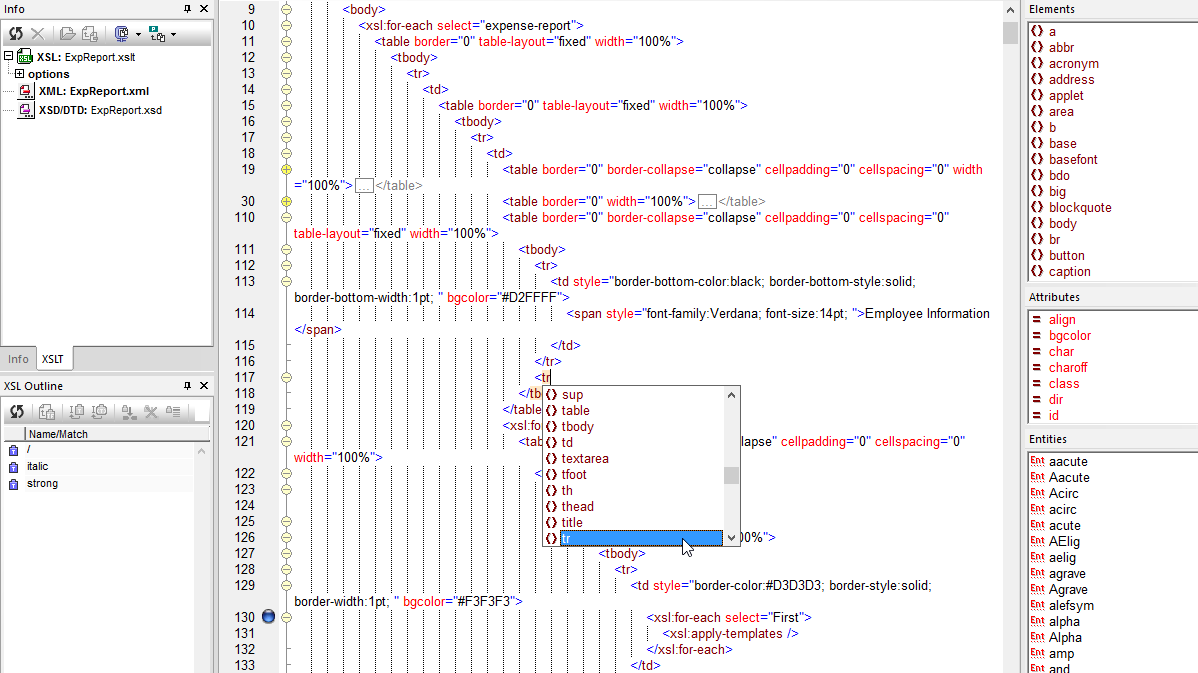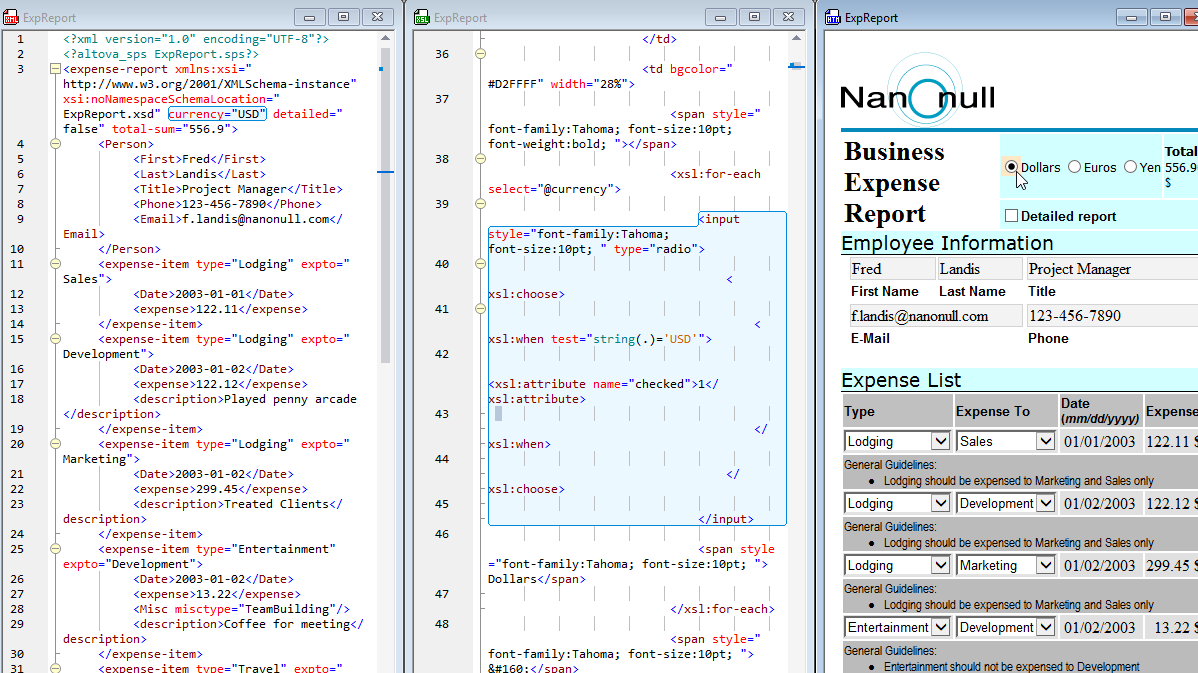Though you can use the XSLT editor in XMLSpy’s Enhanced Grid View to view and edit your stylesheet code in a tabular format, most developers prefer to work in Text View for this type of development. When you're editing XSLT, the Text View provides syntax coloring, line numbering, source folding, book marking, and other visual cues for organizing and navigating through your code quickly and easily. Intelligent entry helper windows and drop down menus offer you choices of elements, attributes, and entities that you can insert with one click, and code completion speeds typing and ensures balanced opening and closing tags.
Integrated project management functionality lets you group related files and assign XSLT transformations, perform batch operations, plug in to source control systems, and more. XMLSpy XML Editor even includes the powerful Find in Files window for performing XML-aware find and replace operations on selected files, folders, or even an entire project at one time.







